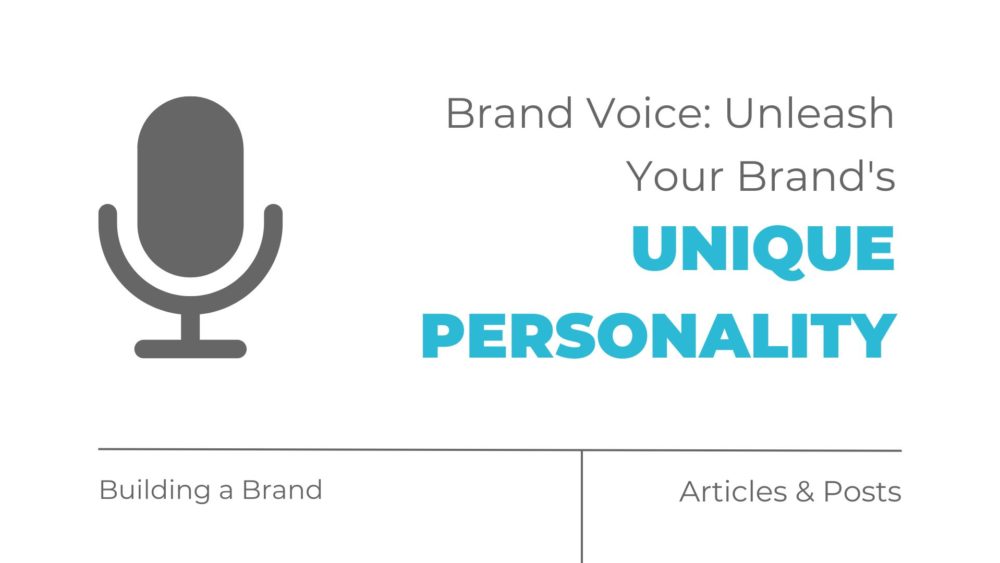A brand voice is the unique personality and style of communication that a company uses to convey its message to customers.
It is the embodiment of your brand‘s values, ethos, and spirit in every interaction with your audience.
A strong brand voice can make your company stand out from the competition and foster a sense of loyalty among your customers.
What is an example of a brand voice?
One of the most recognizable brand voices in the world is Apple.
Their brand voice is simple, elegant, and innovative.
They focus on the user experience and the power of technology to transform lives.
Apple’s messaging is often aspirational, emphasizing the potential for their products to inspire creativity and help users achieve their goals.
Their brand voice is consistent across all platforms, from their graphic design, website, and advertising campaigns to their packaging and in-store experiences.
How do you define your brand voice?
Defining your brand voice starts with understanding your brand’s core values and mission.
Here are some steps to help you develop a distinct brand voice:
- Identify your target audience: Understand who your ideal customer is and tailor your messaging to resonate with them and their pain points.
- Define your brand values: Determine the values and principles that guide your company, and use these as the foundation for your brand voice.
- Analyze your existing content: Review your current marketing materials and identify the tone and style that best represents your brand.
- Develop a brand voice guide: Create a document outlining your brand voice, including specific examples and guidelines for your team to follow.
- Ensure consistency: Apply your brand voice consistently across all communication channels to build a strong brand identity.
What is a brand voice guide, and what’s in it?
A brand voice guide is a comprehensive document that outlines the key characteristics of a company’s unique communication style.
It serves as a reference or standard for your team to maintain consistency and coherence in your brand messaging across all platforms.
The guide typically includes the following information:
- Introduction: An overview of the purpose of the guide and its importance in maintaining a consistent brand identity.
- Brand values and mission: A description of your company’s core values and mission, which serve as the foundation for your brand voice.
- Target audience: A profile of your ideal customers, including demographics, psychographics, and preferences. This helps your team understand who they are communicating with and tailor the brand voice to resonate with the target audience.
- Voice attributes: A list of adjectives or descriptors that define your brand voice, such as friendly, professional, authoritative, or conversational. These attributes help your team create content that aligns with your brand’s personality.
- Tone and style: Guidelines on the tone and style of your brand voice, including how it should sound in different contexts, such as formal or informal settings, and on various platforms, like social media, email, or website copy.
- Dos and Don’ts: Clear examples of what to do and what to avoid when crafting content in your brand voice. This section can include comparisons of appropriate and inappropriate language, phrasing, or tone.
- Grammar and punctuation: Any specific rules or preferences related to grammar, punctuation, and capitalization that your brand follows. This ensures consistency in your written communication.
- Industry-specific terminology: A list of industry-specific terms, jargon, or acronyms that your brand uses, along with explanations and guidelines on when and how to use them.
- Visual elements: While primarily focused on verbal communication, a brand voice guide may also include information on visual elements that complement and reinforce your brand voice, such as typography, color palette, and imagery.
- Examples: Real-world examples of your brand voice in action, from website copy and social media posts to advertising campaigns and customer support interactions. These examples help illustrate the concepts and guidelines outlined in the guide.
Creating a comprehensive brand voice guide ensures that your team has a clear understanding of your company’s unique communication style and can consistently convey your message, regardless of the platform or context.
People Want to Know, What is Nike’s brand voice?
Nike, the global sportswear giant, has one of the most iconic and recognizable brand voices in the world.
Their brand voice is empowering, motivational, and bold.
Nike’s messaging encourages its customers to push their limits and achieve greatness, as embodied by their famous tagline, “Just Do It.”
Their brand voice is consistent across various platforms, from advertising campaigns to social media content, and it resonates with athletes and fitness enthusiasts of all levels.
What are the 3 key characteristics of a brand voice?
- Authenticity: A genuine brand voice reflects your company’s true values and mission. It should be an honest representation of who you are as a brand, and it should resonate with your target audience.
- Consistency: Maintaining a consistent brand voice across all communication channels helps to establish a strong brand identity. Consistency also makes it easier for your audience to recognize and connect with your brand. You want your customers to experience the same thing whether they’re in New Mexico or Atlanta, Ga.
- Adaptability: While consistency is essential, your brand voice should also be flexible enough to adapt to different platforms and contexts. For example, the tone you use on social media may need to be adjusted when communicating through email or on your website.
At the End of the Day
A powerful brand voice is essential for businesses looking to stand out in today’s competitive market.
And we mean in a good way, not in a bad way.
By understanding your brand’s core values, target audience, and unique personality, you can develop a brand voice that resonates with your customers and sets you apart from the competition.
Remember to keep your brand voice authentic, consistent, and adaptable to create a lasting impact on your audience.


Comments are closed.